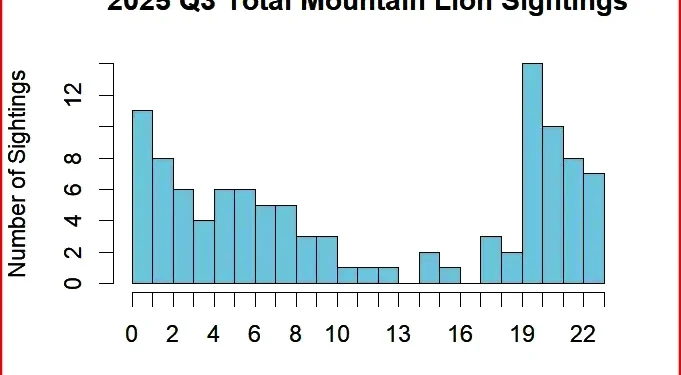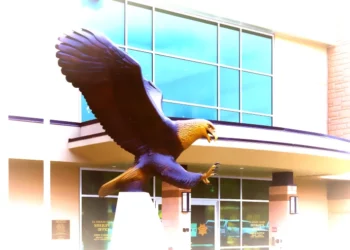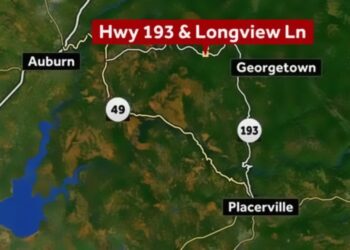PLACERVILLE, Calif. — An independent analysis of 107 mountain-lion sightings in El Dorado County found that most confirmed detections cluster around evening and early-morning hours, with camera traps showing a pronounced nocturnal peak and resident reports spread more evenly across the day, researchers said.
The analysis — compiled from social-media posts (Facebook, Nextdoor), submissions to an EDC Carnivore Project reporting form and direct communications with project researchers — examined only sightings that included a specific date and time and removed ambiguous or misidentified reports. Camera detections (remote home-security and trail cameras) drove the strong nocturnal signal: camera records clustered around 01:00, with secondary early-morning and evening peaks, while firsthand (human) reports were distributed more uniformly over 24 hours. The combined dataset produced a statistically significant clustering overall, with a notable evening peak near 20:00–21:00.
The project separated reports into two types — FIRSTHAND (observed directly by a person) and CAMERA (recorded by trail or home-security cameras) — and used circular statistics and camera-trap analysis tools in R to test whether sightings were uniformly distributed across the day or concentrated at particular hours. Researchers used Rayleigh tests to detect clustering, Watson’s two-sample tests to compare the two sighting streams, and a bootstrap overlap analysis (5,000 iterations) to estimate temporal overlap between firsthand and camera records. Those methods are described in the EDC Carnivore Project’s reporting materials. El Dorado County Carnivore Project
“Large-cat populations are flexible in their timing,” said Ellie Bolas, lead author of a recent UC Davis study of mountain-lion activity in the Los Angeles region. “This flexibility we see in mountain lion activity is what allows us to share these natural areas together.” Bolas’ work documents how mountain lions shift activity toward nighttime hours in areas with high human recreation, a trend that mirrors the pattern the El Dorado monitoring recorded.
Why the difference between camera and human reports? Researchers say camera systems operate continuously and pick up animals when people are not present — overnight and in the early morning — whereas human sightings reflect when people are outdoors and awake. Still, the analysis found a meaningful overlap: dusk hours (around 20:00–21:00) were common to both detection types, making dusk a key window when residents and mountain lions are most likely to cross paths.
The researchers also note 18 firsthand sightings during daytime hours (07:00–19:00), which could reflect individual animals with atypical behavior, increased tolerance or habituation to human presence, or simply chance encounters. The report recommends follow-up spatial analysis to see whether daytime reports cluster geographically — which could indicate a localized animal or hotspot — and cautions that population-level conclusions require larger datasets and continued monitoring.
State wildlife resources describe mountain lions as primarily nocturnal and crepuscular (active at dusk and dawn), but flexible in timing depending on prey, human activity and habitat. Local sunset and sunrise times shift by season in Placerville, which can move the hours when dusk and dawn occur; normalizing sightings to local dusk/dawn times would help refine seasonal comparisons, the report says.
Practical takeaways for residents
-
Be especially vigilant at dusk and after dark when walking pets or moving livestock — those hours show higher overlap with mountain-lion activity.
-
Keep small pets and livestock secured at night; outdoor lighting, motion-sensing lights and properly fenced enclosures reduce risk.
-
Report verified sightings (with date/time and photos/video when possible) to the El Dorado County Carnivore Project to improve monitoring and safety guidance. The project maintains a reporting form and community resources online.
What’s next
Project researchers recommend incorporating spatial (location) data into future analyses to identify hotspots for daytime encounters and better understand whether individual animals are altering their routines. They also urged continued community reporting and collaboration with wildlife agencies as the dataset grows. County officials received a presentation on the project in May 2025, and the group continues to publish quarterly updates and resources for residents.
Source notes
This article summarizes an independent temporal analysis of mountain-lion sightings reported to the El Dorado County Carnivore Project (July 1–Sept. 30, 2025 dataset provided to this newsroom) and places those findings in context with peer research on mountain-lion activity and local sunrise/sunset data. For more details and the project’s figures and tables, see the EDC Carnivore Project resources online. El Dorado County Carnivore Project+1










